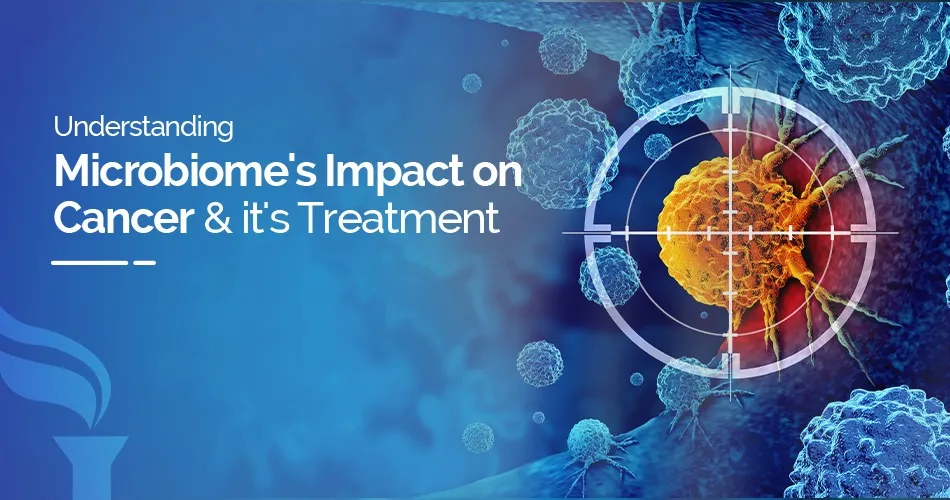Do all Breast Cancers run in the family – Are they hereditary?
Sep 22, 2023

Breast cancer is a condition where the breast's cells proliferate uncontrollably. Breast cancer is becoming common; as per the global cancer statistics in 2020, 685,000 people died worldwide due to breast cancer. Among these, 5-10% of breast cancer cases are hereditary, and 20% are due to familial history, which can be passed from an affected parent to their child. Whereas the vast majority of breast cancers, i.e., 70% of cases, are sporadic or not caused by an inherited, harmful change (mutation) in a gene.
Negative gene mutations that control cell growth and division are the root cause of hereditary breast cancer. In this article, we go over hereditary breast cancer, the elevated risk that comes with it, and what you can do to understand your genetic risk.
Understanding the Cause of Breast Cancer
Connective tissue, ducts, and lobules comprise a breast's three main parts.
- Lobules are the name for the glands that produce milk.
- Ducts are the tubes that deliver milk to the nipple.
- The surrounding and unifying tissue is called connective tissue, made of fatty and fibrous tissue.
Breast cancer is when the breast's cells proliferate out of control. Breast cancer can take many different forms. The ducts or lobules are the main sites where breast cancers start. Breast cancer can spread outside the breast through the bloodstream and lymphatic vessels. When breast cancer spreads to additional body parts, it is said to have metastasized.
Doctors don't know exactly what causes the breast cancer. However, as per global data, 5-10% of cases are caused due to mutations in the breast cancer gene (BRCA), and 20% of cases are due to familial history. If the BRCA1 or BRCA2 genes in your body have inherited mutations or breast cancer has a strong familial history, you may be at a high risk of getting it. You may also have a very high risk of developing ovarian cancer. If you have a strong family history of breast cancer or other cancers, your doctor may suggest a blood test to help identify specific BRCA mutations or other genes passed through your family.
Types of Breast Cancer
Medical professionals know that breast cancer develops when some breast cells grow abnormally. These cells continuously multiply more quickly than healthy cells and thus form a mass or lump by continuing to divide. Cells can spread through your breast (metastasize) to your lymph nodes or other part of the body.
- Invasive ductal carcinoma frequently begins with cells in the milk production ducts.
- Other cells or tissues in the breast, such as the glandular tissue known as lobules (invasive lobular carcinoma), can also give rise to breast cancer.
- Ductal carcinoma in situ is also called as 0 stage breast cancer because the cells haven't spread to the milk ducts.
- Triple-negative breast cancer is one of the most challenging breast cancers because it doesn't have three of the markers associated with other breast cancers, making it difficult to treat.
Common Risk Factors You Cannot Change.
 style="text-align: justify;">Following are some common risk factors of breast cancer that you cannot change:
style="text-align: justify;">Following are some common risk factors of breast cancer that you cannot change:- Getting Older: The likelihood of developing breast cancer increases with age. The majority of breast cancer cases are discovered after age 50.
- Genetic Mutations: Women who inherit mutations in specific genes, such as BRCA1 and BRCA2, are more likely to develop breast and ovarian cancer.
- Reproductive History: Women who begin menstruating before age 12 or wait until age 55 to begin menopause are exposed to hormones for a longer period, increasing their risk of breast cancer.
- Having Dense Breast: Breast cancer risk is higher in women with dense breasts.
- Breast cancer or specific non-cancerous breast diseases in one's personal history: Women who have already experienced breast cancer are more likely to develop it again.
- Breast cancer in the family history: If a woman has a family member who has had breast cancer or multiple family members on her mother's or father's side, her risk of developing breast cancer may increase.
- Radiation therapy in the past for treatment: Breast cancer risk is higher for women over age 30 who received radiation therapy to the chest or breasts.
- Being exposed to the drug diethylstilbestrol (DES): Breast cancer risk is higher for women who have taken DES, a medicine to prevent miscarriages.
Following are some common risk factors that could contribute to breast cancer:
- Women who are not physically active have an increased risk of breast cancer.
- Older women who are obese or overweight are more likely to develop breast cancer than healthy women.
- When used for more than five years, several hormone replacement therapies taken during menopause or some oral contraceptives may increase the risk of breast cancer.
- Getting pregnant for the first time after age 30 and choosing not to breastfeed increases the risk of developing breast cancer.
- According to studies, a woman's risk of developing breast cancer rises as her alcohol consumption increases.
When to see a doctorfor breast cancer?
Even without symptoms, doctors advise that the typical woman between 45 and 54 undergo a yearly breast cancer screening. However, you should see a doctor soon if you experience breast cancer symptoms. Breast cancer warning signs may include:
- A lump with no pain.
- Swollen lymph nodes.
- Discomfort in the breast.
- A sensation of weight in the breast.
- Breast skin becomes thicker, redder, or swollen.
- Changes to the nipple.
- Scaly breasts.
- Nipple retraction, or the turning inward of the nipple.
- The skin over your breasts has redness or orange skin-like pitting.
Early breast cancer, however, can occasionally go unnoticed. In light of this, it's crucial to check your breasts regularly. Genetic counseling is essential for inherited cancer testing to determine any strong family history of breast cancer.
Conclusion
Any comprehensive cancer control plan must include a strategy for diagnosing and treating cancer. Its primary objective is to completely cure cancer patients or significantly extend their lives while ensuring a high standard of living. A diagnosis and treatment plan should never be created in a vacuum if it is to be effective. It must be connected to a program for early detection to identify cases when they are still treatable and more likely to be cured.
Make a doctor's appointment immediately if you discover a lump or other change in your breast, even if a recent mammogram was normal. Opt for a breast cancer screening test to determine the stage of cancer. Apollo Diagnostics can be your partner if you are looking for effective medical test reports at the convenience of your home. Visit our website today and book a test to get accurate results at the earliest.
Frequently Asked Questions
1. Does having a family history of the disease make you more susceptible?
Although those with a family history of the disease are at higher risk, most breast cancer victims don't have a history of the disease in their families. According to statistics, only 5–10% of people diagnosed with breast cancer have a family history.
2. What are breast cancer's signs and symptoms?
A new mass or lump is the most typical indication of breast cancer. Breast cancers can be tender, soft, or rounded, but they are more likely to be cancerous if they are painless, hard, and have irregular edges.
3. How frequently should I visit my doctor for a checkup?
A clinical breast and pelvic exam should be performed as part of your annual physical. Schedule an appointment with a skilled doctor immediately if you experience any unusual symptoms or changes in your breasts before your appointment.
Related Blog Post
- 5 Ways to support a loved one with cancer
- Preventing cancer is better than living with cancer.
- Cervical Cancer is a Form of Cancer Which Develops in the Cervix.
- World Breast Cancer Awareness Month
- Inherited Cancer Testing and Role of Genetic Counselling.
- Incidence of Cervical Cancers in India – Role of HPV testing & Vaccination
Blog Categories
- Child Health
- Mens Health
- Women's Health
- Mental Health
- Health Myths & Facts
- Fitness
- Nutrition/Recipes
- Remedies
- Weight Management
- Stress Management
- Health Supplements
- Addiction Management
- Disease Management
- Allergy
- Anemia
- Arthritis
- Asthma
- Autoimmune Diseases
- Blood Pressure
- Cancer
- Deficiencies
- Dengue/Malaria/Chikungunya
- Diabetes
- Eye Problems
- Heart Diseases
- Hepatitis
- HIV/AIDS/STD
- Hormonal Imbalance
- Infection/Flu/Viral
- Kidney
- Liver
- Menstrual Problems
- Pregnancy
- Skin & Hair Problems
- Stomach Ailments
- Thyroid
- Others
- Health Checkups
- Diagnostics/Pathology
- Lifestyle & Wellness
- Covid
- Medical Tests
- Cholesterol
- Health Tips
- Parent Care/Old Age
- Lungs
- Food Intolerance








